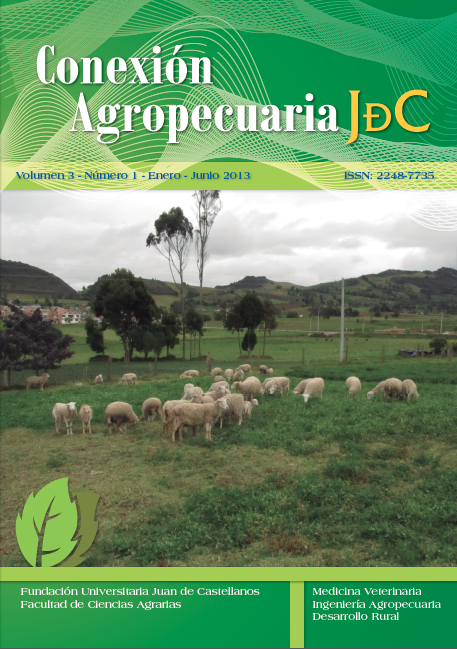RESISTANCE OF CAUSING BACTERIA OF BOVINE MASTITIS IN REGARD TO COMMON ANTIMICROBIALS
Keywords:
antimicrobials, bacterial sensitivity, bovines, clinical mastitis, resistance sensitivity, sub-clinic mastitisAbstract
The bacteria develop resistence against to the common antimicrobians, which is a limitant in the control and treatment of infectious diseases. In the sistems of production of bovine milk, one problem that affects the quantity and quality of the produced milk, is the mastitis, which in most cases has a bacterian origen. Addition to correct milking routine is used many antibacterial agents that for pharmacokinetics and pharmacodynamics reasons are the first selection for this disease. Some cases the use of antibacterial agents is effective, while in other cases do not, due to the development of bacterial resistence. Recently, it has been possible to identify different mechanisms of resistence developed by bacteria. This has allowed pharmacology researchers to create new drugs or to modify existing, seeking to decrease the inefficacy caused by the mutation of the bacteria as an adaptative response mechanism. Therefore,the objective of this review is to offer an updated document on resistance mechanisms identified.
Author Biographies
Darío MARTÍNEZ PACHECO
M.V.
Fundación Universitaria Juan de Castellanos
Anastasia CRUZ CARRILLO
M.V. M.Sc.
Universidad Pedagógica y Tecnológica de Colombia
Giovanni MORENO FIGUEREDO
M.V. Ph.D.
Fundación Universitaria Juan de Castellanos
References
ALLEN, H.K. DONATOS, J. & WANGS, A. 2010. Call of the wild: antibiotic resistance genes in natural enviroments. Nature. Reviews. Microbiology 8 (4): 251-259.
APONTE, C.C. F. 2007. Perfil de resistencia in vitro a antimicrobianos de cepas causantes de mastitis aisladas de leche cruda bovina en establecimientos de pequeña y mediana producción. Memorias del Instituto de Investigaciones en Ciencias de la Salud 5(1): 19-25.
BAJWA, N.S., BANSAL, B.K., SRIVASTAVA, A.K. & RANJAN, R. 2007. Pharmacokinetic profile of erythromycin after intramammary administration in lactating dairy cows with specific mastitis. Veterinary Research Communication 31: 603-610.
BECERRA, G., PLASCENCIO, A., LUÉVANOS, A., DOMÍNGUEZ, M. & HERNÁNDEZ, I. 2009. Mecanismos de resistencia a antibacterianos en bacterias. Enfermedades Infecciosas y Microbiológicas 29 (2): 70-78.
BETANCOURT, O, SCARPA, C. & VILLAGRÁN, K. 2003. Estudio de resistencia de cepas de Staphylococcus aureus aisladas de mastitis subclínica bovina frente a cinco antibióticos en tres sectores de la IX región de Chile. Revista Científica FCV-LUZ 13 (5): 413-417.
BOSCAN O. J., VILLARROEL N. R., OVIEDO B.A., SÁNCHEZ V.A., PINO, R. D., GARCÍA, B., HERNÁNDEZ, G, L., GONZÁLEZ & PÉREZ, B. M. 2009. Bacterias patógenas potenciales al inicio del periodo seco de vacas doble propósito con mastitis subclínica. Disponible en http://redalyc.uaemex.mx/src/inicio/ArtPdfRed.jsp?iCve=95911669010. Accesado: 20/01/2013.
CABALLERO, R. J. 2007. Actualización en farmacología clínica: Macrólidos. Revista Paceña de Medicina Familiar 4(6): 149-153.
CABRERA, C. E., GÓMEZ, R. F. & ZÚÑIGA, A. E. 2007. La resistencia de bacterias a antibióticos, antisépticos y desinfectantes una manifestación de los mecanismos de supervivencia y adaptación. Colombia Médica 38 (2): 149-158.
CABRERA, A. C. E. & MEJÍA, O. C. 2008. Los mecanismos de resistencia a antibióticos: ¿Podremos lograr un equilibrio entre el uso – abuso de los antibióticos y así lograr la disminución de la resistencia bacteriana a estos medicamentos? Revista Colombiana de Salud Humano 3 (1): 83-104.
CALDERÓN, R. A., RODRÍGUEZ, R. V., ARRIETA, B. G & MATTAR, V. L. 2011. Prevalence of mastitis in dual-purpose cattle farms in Montería (Colombia): etiology and antibacterial susceptibility. Revista Colombiana de Ciencias Pecuarias 24:19-28.
CASTELLANO, G. M & PEROZO-MENA, A. 2010. Mecanismos de resistencia a antibióticos B-Lactámicos en Staphylococcus aureus. Revista Kasmera 38 (1):18-35.
CHAISATIT, C., TRIBUDDHARAT C, PULSRIKARNC & DEJSIRILERT, S. 2012. Molecular characterization of antibiotic-resistant bacteria in contaminated chicken meat sold at supermarkets in Bangkok, Thailand. Japanese Journal of Infectious Diseases 65: 527-534.
CHAMBERS H.F. 2006. General principles of antimicrobial therapy. Chapter – 42. Section VIII - Chemotherapy of microbial diseases. Goodman & Gilman’s the pharmacological basis of therapeutics- 11th ed.
CRUZ, C.A., ESPITIA, C.E., HERNÁNDEZ, L.J.J.A & SANABRIA, V.J.P. 2007. Identificación de bacterias causantes de mastitis bovina y su resistencia ante algunos antibacterianos. Revista UDCA. Actualidad & Divulgación Científica 10: 81-89.
DENAP, J.C.B. & HERGENROTHER, P. J. 2005. Bacterial death comes full circle: targeting plasmid replication in drug-resistant bacteria. Organic & Biomolecular Chemistry 3: 959-966.
DEPARDIEU, F., PODGLAJEM, I., LECLERCP, R., COLLATZ, E & COURVALIN, P. 2007. Modes and modulations of antibiotic resistance gene expression. Clin. Microb. Resistance 20: 79-114.
ECHEVERRI, Z. J. J., JARAMILLO, M. G. & RESTREPO, B. L. F. 2010. Evaluación comparativa de dos metodologías de diagnóstico de mastitis en un hato lechero del Departamento de Antioquia. Revista. Lasallista Investigación 7(1): 49-57.
FERNÁNDEZ, B. O. F., TRUJILLO, G. J. E., PEÑA, C. J. J. & CERQUERA, G. J. 2012. Mastitis bovina: generalidades y métodos de diagnóstico. Redvet. 13 (11):1-11. Disponible en http://www.veterinaria.org/revistas/redvet/n111112.html. Accesado: 10/01/2013.
FUCHS, L. Y., CHIHU, L., CONDE, C., GONZÁLEZ, V. M., NOGUEZ, A. H., CALDERÓN, E., AVONCE, N. & OVANDO, C. 1994. Mecanismos moleculares de la resistencia bacteriana. Salud Pública México 36 (4):428-438.
GOODMAN G. A. 2003. Las Bases Farmacológicas de la Terapéutica. 10ª. Ed. Mc Graw Hill. Vol. II. Cap. 40. México. 330 pp. GROHMANN, E., MUTH, G. & ESPINOSA, M. 2003. Conjugative Plasmid Transfer in Gram-Positive Bacteria. Microbiology and Molecular Biology Reviews 67(2): 277-301.
HAVERI, M.; SUOMINEN, S.; RANTALA, L.; HONKANEN-BUZALSKI, T. & PYÖRÄLÄ, S. 2005. Comparison of phenotypic and genotypic detection of penicillin G resistance of Staphylococcus aureus isolated from bovine intramammary infections. Veterinary Microbiology 106: 97-102.
IDRESS M, MUSSARAT U, BADSHAH Y, QAMAR R. & BOKHARI H. 2010. Virulence factors profile of drug-resistant Escherichia coli isolates from urinary tract infections in Punjab, Pakistan. European Journal of Clinical Microbiology and Infectious Diseases 29 (12):1533-1537.
KNAPP, C.W., LIMA, L., OLIVARES-RIEUMONT, S., BOEN, E., WERNER, D. & GRAHAM, D.W. 2012. Seasonal Variations in Antibiotic Resistance Gene Transport in the Almendares River, Havana, Cuba. Front Microbiol. 3: 396.
KNAPP, C.W; DOLFING, J; EHLERT, P.A. & GRAHAM, D.W. 2010. Evidence of increasing antibiotics resistance gene abundance in archived soils since 1940. 44 (2): 580-587.
LEWIS K. 2007. Persistent cells, dormancy and infectious disease. Nature Reviews Microbiology 5: 49-56.
MANJARREZ, L.A.M., DÍAZ, Z.S., SALAZAR, G.F., VALLADARES, C.P., GUTIÉRREZ, C.A., BARBABOSA, P.A., M. TALAVERA, R.M., ALFONSO, S.M. & VELÁSQUEZ, O.V. 2012. Identificación de biotipos de
Staphyloccocus aureus en vacas lecheras de producción familiar con mastitis subclínica en la región centro-este del Estado de México. Revista Mexicana de Ciencias Pecuarias 3(2): 265-274.
MENSA, J., GARCÍA-VÁSQUEZ E. & VILA J. 2003. Macrólidos, estólidos y estreptograminas. Enfermedades Infecciosas y Microbiología Clínica 21(4): 200-208.
MOMTAZ, H., FARHAD SAFARPOOR D., TAGHI, T REZVANI, A. & YARALI, S. 2012. Shiga Toxin-Producing Escherichia coli Isolated from Bovine Mastitic Milk: Serogroups, Virulence Factors, and Antibiotic Resistance Properties. Scientific World Journal. 618-709.
MOLINA, J; CORDERO, E., PALOMINO, J. & PACHÓN, J. 2009. Aminoglicósidos y polimixinas. Microbiol Clin. 27(3):178-188.
NATIONAL MASTITIS COUNCIL (NMC). 2003. Current Concepts of Bovine Mastitis. 4th ed. National Mastitis Council, W.D. Hoard and Sons Co. Fort Atkinson, WI. 39-44.
NIKAIDO, H. & ZGURSKAYA, H.I. 2001. AcrAB and related multidrug efflux pumps of Escherichia coli. Journal of Molecular Microbiology and Biotechnology 3: 215-218.
NORMARK, B.H. & NORMARK, S. 2002. Evolution and spread of antibiotic resistance. Journal of Internal Medicine 252: 91-106.
NÚÑEZ, F.B. 2004. Macrólidos. Uso racional de antibióticos 4: 17-22.
ORMAN, B. 2006. La resistencia bacteriana y sus mecanismos de dispersión. Revista de la Facultad de Odontología Universidad de Buenos Aires. 21 (50/51): 13-19.
PALOMINO, J. & PACHÓN, J. 2003. Aminoglicósidos. Enfermedades Infecciosas Microbiología Clínica 21(2): 105-115.
PARADA, J.L., GONCALVES, D., SOCCOL, V.S., LIMA, M. & SOCCOL, C.R. 2011. Bovine Mastitis in the Metropolitan Area of Curitiba: Antibiotic Resistance and Antimicrobial Control of the Infection. Brazilian Archives of Biology and Technology 54 (4): 709-716.
PELLEGRINO, M.S, FROLA, I.D., ODIERNO, L.M. & BOGNIA, C.I. 2011. Mastitis Bovina: Resistencia a antibióticos de cepas de Staphylococcus aureus asiladas de leche. REDVET Rev. Electrón. Vet. 12 (7). Disponible en http://www.veterinaria.org/revistas/redvet/n070711/071110.pdf. Accesado: 26/12/2012.
POOLE K. 2002. Mechanisms of bacterial biocide and antibiotic resistance. Journal of Applied Microbiology Symposium Supplement 92: 55S-64S.
POPPE, C., MARTIN, L. C., GYLES, C. L., REID-SMITH, R., BOERLIN, P., MCEWEN, S. A., PRESCOTT, J. F. & FORWARD, K. R. 2005. Acquisition of resistance to extended-spectrum cephalosporins by Salmonella enterica subsp. enterica serovar Newport and Escherichia coli in the turkey poult intestinal tract. Applied and Environmental Microbiology 71(3):1184-1192.
RAMÍREZ, N., GAVIRIA, G., ARROYABE, O., SIERRA, B. & BENJUMEA, J. 2001. Prevalencia de mastitis en vacas lecheras lactantes en el municipio de San Pedro de los Milagros, Antioquia. Revista Colombiana de Ciencias Pecuarias 14 (1): 76-87.
RUSSI, N. 2008. Susceptibilidad de antibióticos de Staphylococcus aureus aislados de mastitis bovina. Tesis para optar el título de Magíster Scientiae en Ciencias Veterinarias, Mención Salud Animal. Facultad de Ciencias Veterinarias. Universidad del Litoral. Esperanza, Argentina.
SAMANIEGO, E. 2005. Macrólidos y lincosamidas En: Fundamentos de Farmacología Clínica. 6ª. Edición. Ed. C.C.E. Quito. II: 1129-1134.
SAN MARTÍN, B., MORALES, M.A., AGÜERO, H., LEÓN, B., ESPPINOZA, S., IRAGÜEN, D., PUGA, J. & BORIE, C. 2002. Resistencia bacteriana en cepas patógenas aisladas de mastitis en vacas lecheras de la V Región Metropolitana y Xa Región, Chile. Archivos de Medicina Veterinaria 34 (2): 221-234.
SHAKIL, S., KHAN, R., ZARRILLI, R. & KHAN, A.U. 2008. Aminoglycosides versus bacteria a description of the action, resistance mechanism, and nosocomial battleground. Journal Biomedical Sciences 15: 5-14.
SHARMA R, SHARMA CL. & KAPOOR B. 2005. Antibacterial Resistance: Current Problems and Possible Solutions. Indian Journal Medicine Sciense 59(3):120-129.
SRINIVASAN, V., GILLESPIE, B. E. & LEWIS, M. J. 2007. Phenotypic and genotypic antimicrobial resistance patterns of Escherichia coli isolated from dairy cows with mastitis. Veterinary Microbiology 124 (3-4): 319-328.
SUÁREZ, C.J., KATTAN, J, N, GUZMÁN, A.M. & VILLEGAS, M.V. 2006. Mecanismos de resistencia a carbapenems en P. aeruginosa, Acinetobacter y Enterobacteriaceae y estrategias para su prevención y control. Asociación Colombiana de Infectología 10(2): 85-93.
TAFUR, J. D., TORRES, J.A. & VILLEGAS, M.V. 2008. Mecanismos de resistencia a los antibióticos en bacterias Gram negativas. Asociación Colombiana de Infectología 12 (3): 227-232.
TALÉNS-VISCONTI, R., GARRIGUERS, T.M. & CANTÓN, E. 2002. Mecanismo de resistencia bacteriana a las quinolonas. Disponible en http://www.seq.es/seq/html/revista_seq/0102/rev1/rev1. Accesado: 15/01/2013.
THOMSON, KS. & SMITH ME. 2000. The New b-lactamasas on gram-negative bacteria at the dawn of the new millennium. Microbes and Infection Journal 2: 1225-1235.
VIGNOLI, R. & SEIJA, V. 2003. Principales Mecanismos de Resistencia. Cap 35: 649-662. Disponible en http://www.higiene.edu.uy/cefa/2008/Principalesmecanismosderesistenciaantibiotica.pdf. Accesado: 12/12/2012.
WARNES, S.L., HIGHMORE, C.J. & KEEVIL, W. 2012. Horizontal Transfer of Antibiotic Resistance Genes on Abiotic Touch Surfaces: Implications for Public Health. mBio. Nov-Dec: 3(6).
WRIGHT, G. D. 2005. Bacterial resistance to antibiotics: Enzymatic degradation and modification. Advanced Drug Delivery Reviews 57:1451-1470.
YONEYAMA H. & KATSUMATA R. 2006. Antibiotic resistance in bacteria and its future for novel antibiotic development. Biosciencie. Biotechnology Biochemical 70(5):1060-1075.




